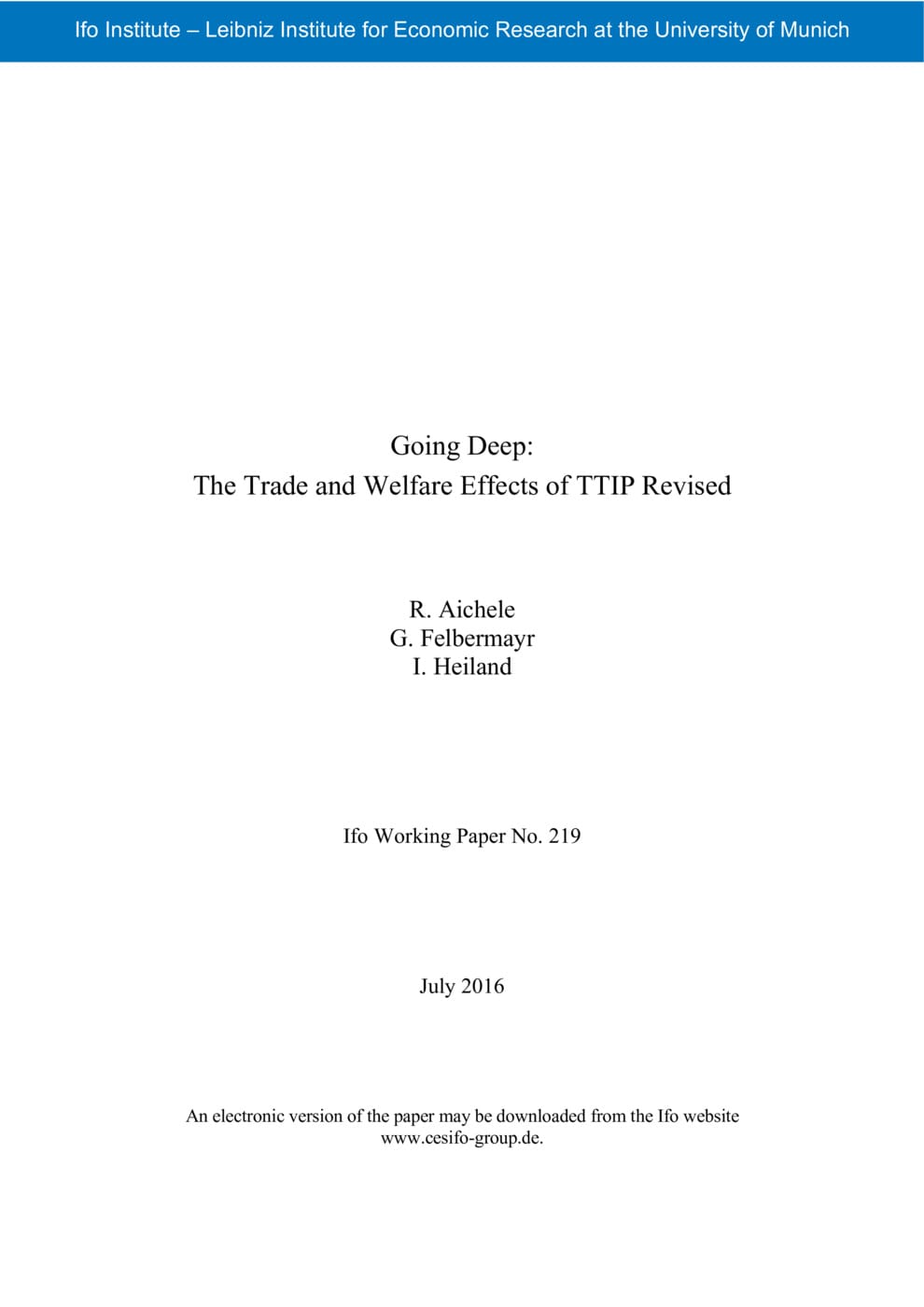Going Deep: The Trade and Welfare Effects of TTIP Revised
Ifo Institute, Munich, 2016
Ifo Working Paper No. 219

Since July 2013, the EU and the United States have been negotiating a preferential trade agreement, the Transatlantic Trade and Investment Partnership (TTIP). We use a multicountry, multi-industry Ricardian trade model with national and international inputoutput linkages to quantify its potential economic consequences. We structurally estimate the model's unobserved parameters and the effect of existing preferential trade agreements on trade cost. With those estimates in hand, we simulate the trade, value added, and welfare effects of the TTIP, assuming that the agreement would eliminate all transatlantic tariffs and reduce non-tariff barriers as other deep PTAs have done in the past. We find a long-run increase of real income of .4% for the EU, by .5% for the United States, and by -.02% for the rest of the world relative to the status quo. However, there is substantial heterogeneity across the 140 geographical entities that we investigate. Gross value of EU-US trade is predicted to increase by 50%, but the content of EU and US value added would decrease, signalling a deepening of the transatlantic production network. Moreover, we quantify trade diversion effects on third countries and find that those are less severe for value added trade than for gross trade. This highlights the importance of global value chains in understanding the effects of the TTIP on outsiders and the global economy.